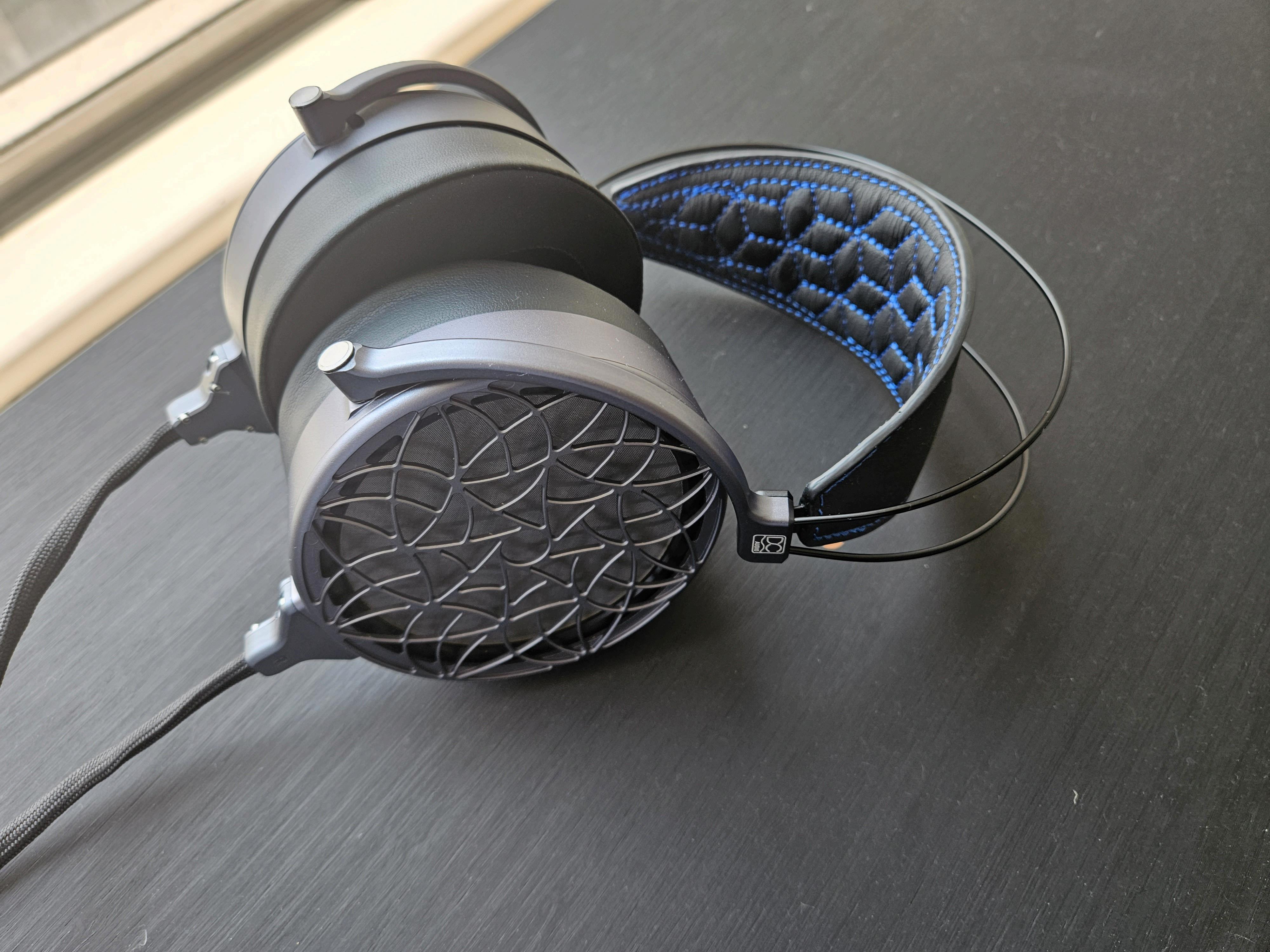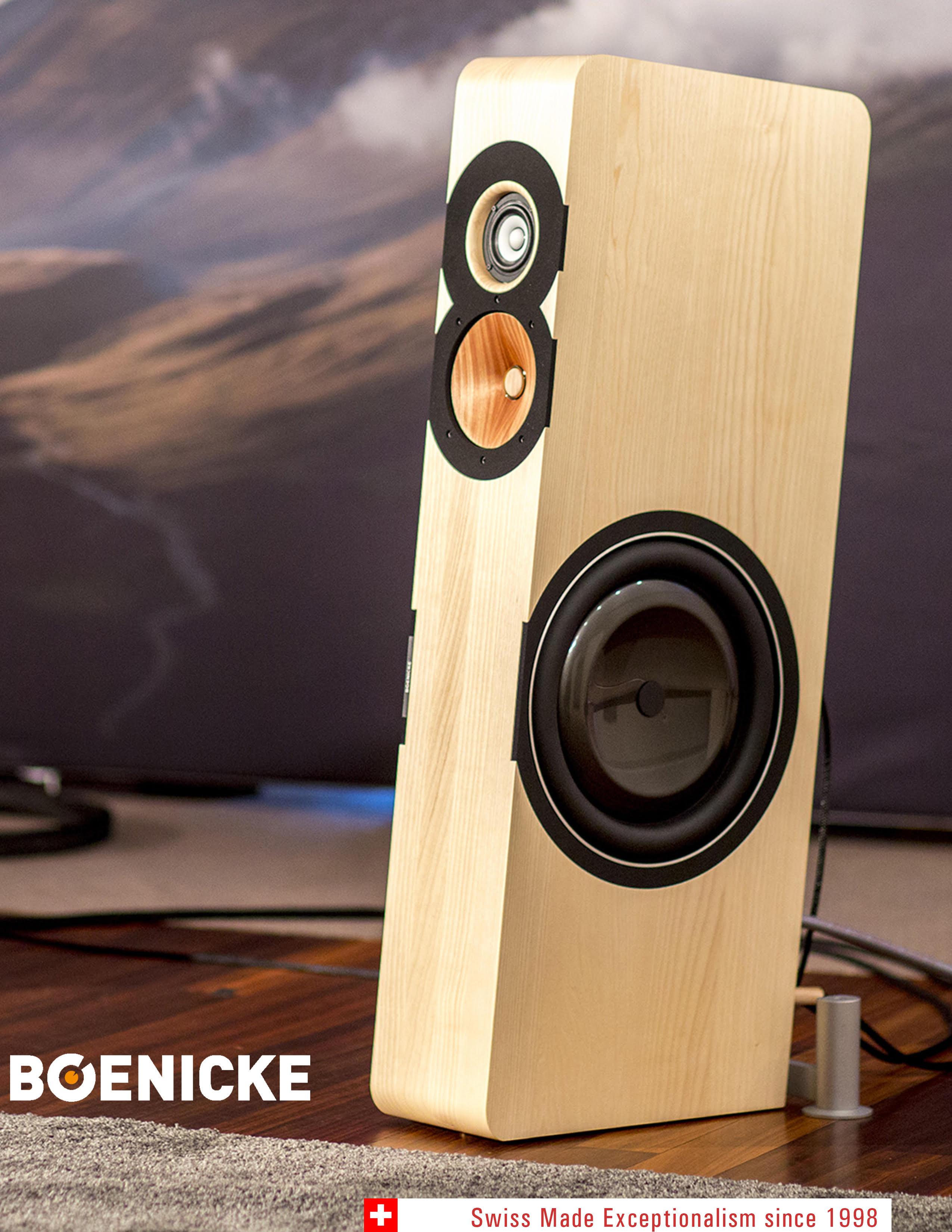
3 minute read
DAN CLARK CORINA
It is alway great fun for me to travel to the world of electrostatic components— headphones, amplifiers, speakers—via my ever evolving Tardis—now a Mid Century Modern, beautifully upholstered chair (& a half). Indeed, electrostatics provide musical insight into another world, entirely. It is a world removed from dynamic headphones and planar magnetic headphones and encompasses a vast network of lands—STAX, VIVA, HeadAmp, Trilogy, Dan Clark, Warwick Acoustics, Martin Logan, Quad, etc. Perhaps this is why after so many decades electrostatics are alive, well and thriving! It’s over two and a half years now since I made my first trip to this planet via my then Yellow-Chair-Tardis, a time and space machine of sorts, when coupled with electrostatic ‘engines’. And on that first trip I discovered that it was possible to move beyond musical simulacrum—a very good high fidelity rendering of one’s music— to an experience that could almost literally place one in the relevant performance venue. How is that possible?
There is something about electrostatics that masterfully recreates the ambiance, the air, meticulous soundstaging—depth, breadth, layers, position, and space between performers —and then the various microdynamics—small tell-tale signs of a given venue—that allow for one’s easy suspension of disbelief. And, as a direct result, you are there with the performer(s), comfortably ensconced in venue —the nightclub, the concert hall, the arena, etc.—and upon your own purposed Tardis.
Advertisement
“Humbug!”
You say.
Then it is experience that you’ll be needing to have for your own suggest the travel arrangements via the various electrostatic gear, as I imagine would Justin Wilson of HeadAmp (a truly good guy). You, however, will have to provide your most comfortable chair, as Tardis—time and space machine—to make this journey to the Electrostatic World.

I travel to the Electrostatic World this time with a well known and superb electrostatic engine/amplifier—the HeadAmp Blue Hawaii latest electrostatic headphone, the CORINA, the subject of this review. Other components in the review—Mojo Audio Mystique SE DAC, Silent Angel Bonn N8 Pro network switch, Audience FrontRow, and AntiCable wires and cables, and the TORUS RM20 power conditioner.




REFRAIN: Unlike most reviews, this review will be non-sequential, as it will start with how the headphones actually sound and not the process of physically “undressing” them and/or laying out their various parts, specifications, etc. Think of this review then, as a non-linear movie—Memento, Kill Bill, Pulp Fiction, Transcendence, In the Shadow of the Moon, etc—that, likewise, starts at the end and winds its way to the beginning.
The Sound
If ever a component could itself be called ‘musical,’ then the Dan Clark CORINA is that
CD, or a stream. There is simply no other way around it. If you are, indeed, a music lover first, then the CORINA will lure you in, immerse you in the music in a manner so few components of any type can do.
As mentioned above, the earmarks of the venue are beautifully brought together via the CORINA like few headphones have any right or ability to do. The palpability of a given soundstage, the performer(s) therein, and the various ambient cues are simply outstanding. I am forced, constantly, to stop and appreciate what I’ve just heard as it relates to a given performance. This is rather inefficient for a reviewer but tremendously informative for a lover of music.
Tone, timbre, and the texture of instruments are so incredibly natural, so lifelike as to render the performance of other headphones mere facsimiles of the selfsame performance. Further, the CORINA is, perhaps, hidden details, it gives nothing away to the STAX SR-009S ($4,500) electrostatic headphone. And the CORINA is inherently more musical and, again, more natural than the SR-009S. The CORINA and the STAX SRX9000, STAX’s Top-of-the-Line (TOTL) electrostatic headphone, are a good deal more alike than different and may well be on the very same performance plane.





The controversial Tommy Flanagan album Solo Piano plays through and it is sublime and goes by far too quickly. It is controversial in that Tommy Flanagan is said not to be the actual pianist for the majority of the tracks across the album. And Storyville, the album’s producer, was said to have removed Solo Piano from its catalog as a result. Yikes! Can you extremely adaptive to venue, wherein it can accommodate, beautifully, the intimate solo, duo, or trio performance and it can also accommodate the tumult of larger driving symphonies or of stadium concerts. In this respect, it is eminently adaptable. Its staging abilities—layering, position, relative space, image stability—of performances is extraordinary and, at times, it will appear as though the sound is coming from somewhere in your listening room and not through the headphones. Electrostatics do indeed have an ability to excel beyond other headphone technologies in this respect, though the CORINA carries things a bit further still. The CORINA moves far beyond its electrostatic sibling, the VOCE, and even places great










